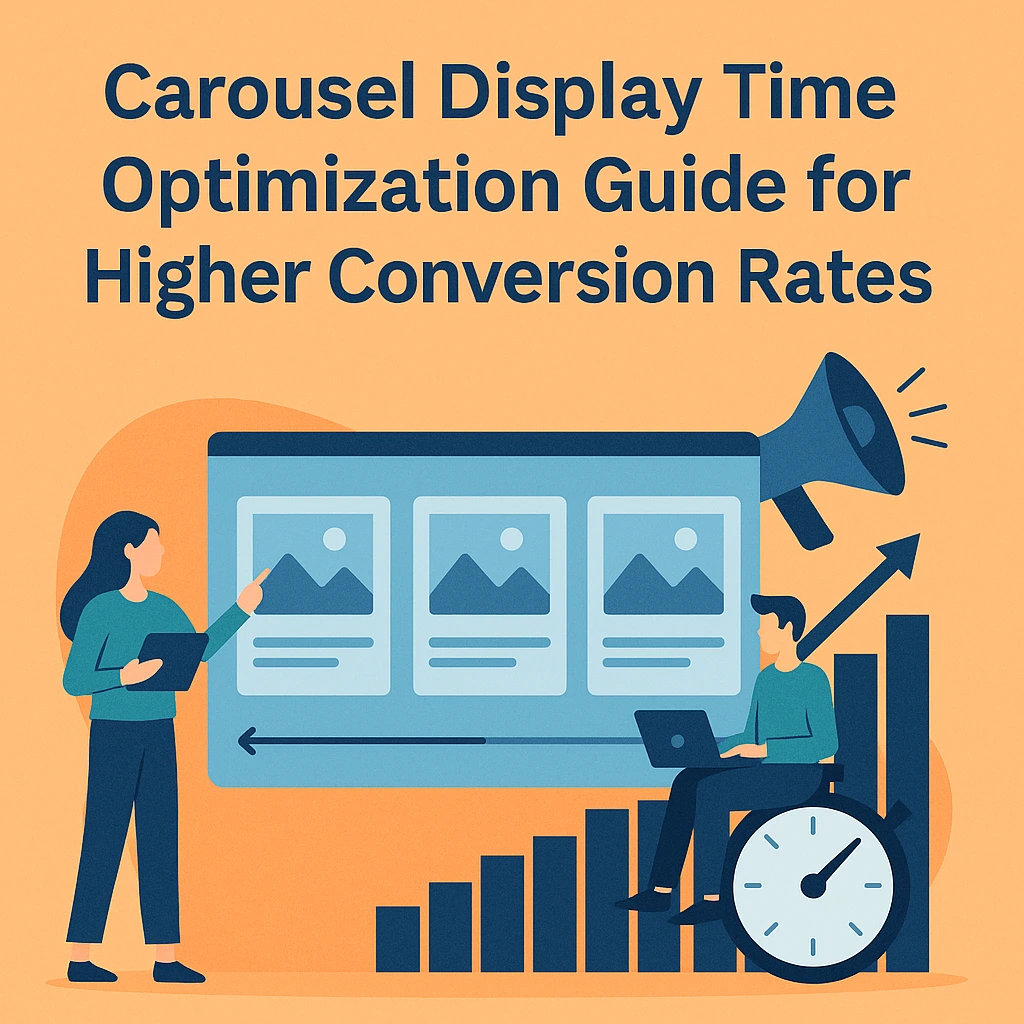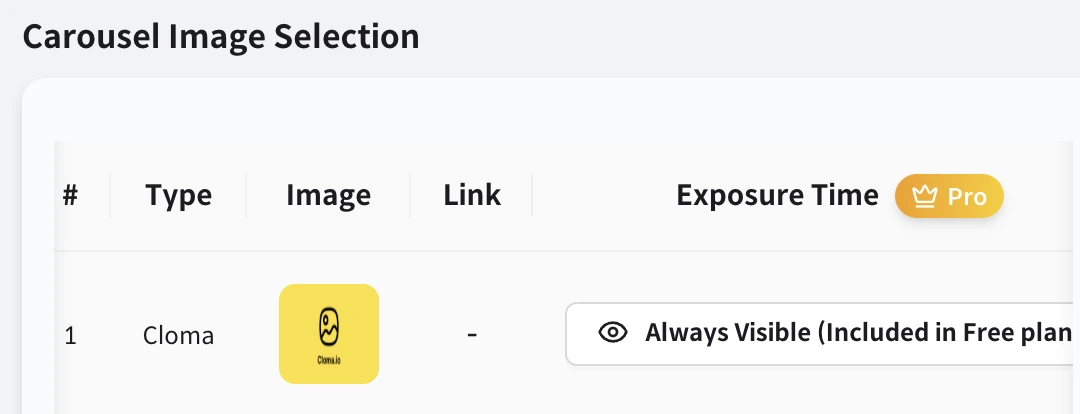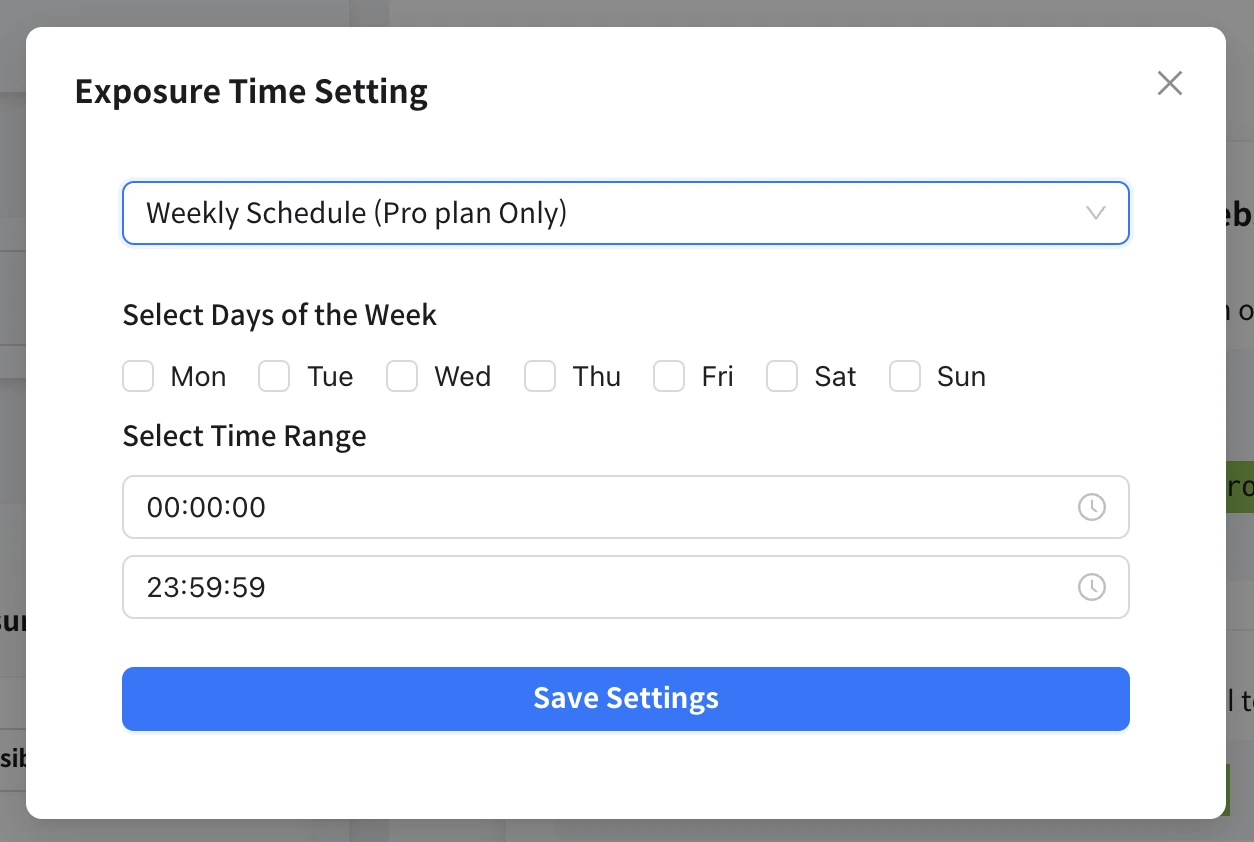Carousel Display Time Optimization Guide for Higher Conversion Rates

2025.08.08 · Emily Wilson · Cloma.io Team
The performance of a carousel can vary greatly depending on when it is shown. While many operators focus on carousel design and content creation, the strategy of precisely setting the exposure time window is often overlooked.

In this post, we’ll explore why optimizing carousel display time is so important, and share practical tips and real-world examples to help you maximize conversions.
📌 Why Carousel Display Time Matters
- User Behavior Patterns
- User access patterns vary over a 24-hour period.
- For example, B2B services often see traffic during business hours, while B2C e-commerce stores experience spikes in the evening and on weekends.
- Ad Budget Efficiency
- Displaying content indiscriminately throughout the day can dilute budget effectiveness.
- By excluding low-conversion time slots, you can achieve better results with the same budget.
- Message Timing Effect
- The timing of your content delivery can significantly affect engagement.
- For instance, show short promo alerts during commute hours, and more relaxed event introductions on weekend mornings.
⚙️ Time-Based Display Strategy Tips
-
Data-Driven Decisions Use analytics tools like GA or GSC to compare traffic and conversion rates by time slot. Prioritize the top-performing hours for maximum impact.
-
Target-Specific Scheduling
-
B2B: Focus on business hours (09:00–18:00)
-
B2C E-commerce: Target evenings (20:00–23:00) and weekends
-
App Install Campaigns: Leverage commute times (07:00–09:00, 18:00–20:00)
-
Event/Promotion Integration
-
Align carousel display with time-sensitive events or sales
-
For example, a “Midnight Opening” event should display between 23:00–01:00
📈 Real-World Use Cases
Case 1 – Midnight Exclusive Event
A fashion retailer ran a “Night Owl Discount” carousel from 00:00–02:00 only. As a result, sales during that time doubled compared to previous periods, thanks to targeting late-night shoppers.
Case 2 – Morning Commute Newsletter Promotion
A B2B SaaS company displayed newsletter subscription banners only during 07:00–09:00. By focusing on the mobile-heavy morning commute window, subscription conversions rose by 30%.
Case 3 – Weekend-Only Promotion
An electronics store displayed its discount carousel exclusively on Saturdays and Sundays. This strategy capitalized on weekend shopping trends, boosting conversion rates by 1.5x compared to weekdays.
🚫 Cautions When Setting Display Time
- Ensure Adequate Exposure: Too short a time window may not generate enough impressions for meaningful data.
- Regular Reanalysis: Optimal hours can shift due to seasonality, events, or competitor actions.
- Consider Device/Region Differences: User habits differ by device type and geographic location.
✅ Conclusion
The success of a carousel depends not only on content quality but also on when it’s shown. Analyze your data to identify high-conversion time slots, and craft a display strategy that aligns with your audience’s behavior.

The good news is, Cloma.io’s Carousel feature makes implementing such strategies simple. With Cloma.io, you can set display rules based on specific hours (e.g., 00:00–02:00), days of the week (weekends only), or periods (limited-time event campaigns). All of the strategies mentioned above can be executed directly within the platform—no coding required.

The admin interface allows you to configure time slots in just a few clicks, and upcoming features will support A/B testing for further conversion optimization.
👉 Try Cloma.io now to set your carousel display time and experience targeted marketing results.

Emily Wilson · Cloma.io Team
2025.08.08
Tags: #Cloma.io #Carousel #CarouselDisplayTime #CarouselMarketing
